If you are a history enthusiast, want to study religion or a spiritual seeker, then Bodh Gaya is the perfect place that you must pay a visit to in your lifetime. Bodh Gaya is the place where history, religion and spirituality is blended intimately. ‘Buddhist Circuit’ is the latest tourism buzzword in India and state tourism offices are scrambling to excavate and tidy up Buddhist ruins. These fledgling circuits aspire to connect with the Buddhist circuit, following in the footsteps of the real-life Shakyamuni, the subcontinent’s first pilgrimage track, which has been extant for almost two millennia.
While Bodh Gaya is best identified with the famous Mahabodhi temple which demands mandatory visit, there are a lot more you can see and do which makes this place quite an unmissable destination. As the name suggests, most of the monuments in Bodh Gaya are either related to Goutama Buddha or Buddhism. But the place is equally revered by the Hindus who throng Bodh Gaya everyday in large numbers. The temples, monasteries and stupas that dot the small town makes for an enlightening tour. Hence, without further delay let us explore Bodh Gaya, the birthplace of Buddhism.
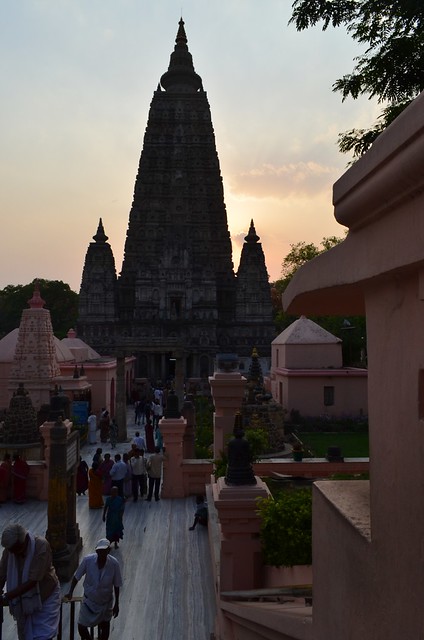
Post Contents
Mahabodhi Temple Complex in Bodh Gaya
When you are in Bodh Gaya, make sure you do not miss the Mahabodhi temple, because it is the epicentre around which the whole town is built. Since you need to spend a good amount of time in the temple complex which is quite huge, you should start your Bodh Gaya visit with these monuments.
Mobile phones, electronic gadgets and bags are not allowed in the temple complex. You can use the free-of-cost lockers at the entrance to deposit the same. Photography and videography are allowed in the temple complex for which you will have to pay Rs 100 and Rs 300 respectively. The temple complex boasts of a number of landmark attractions which you can cover just by taking a walking tour..
Let us walk the temple complex:
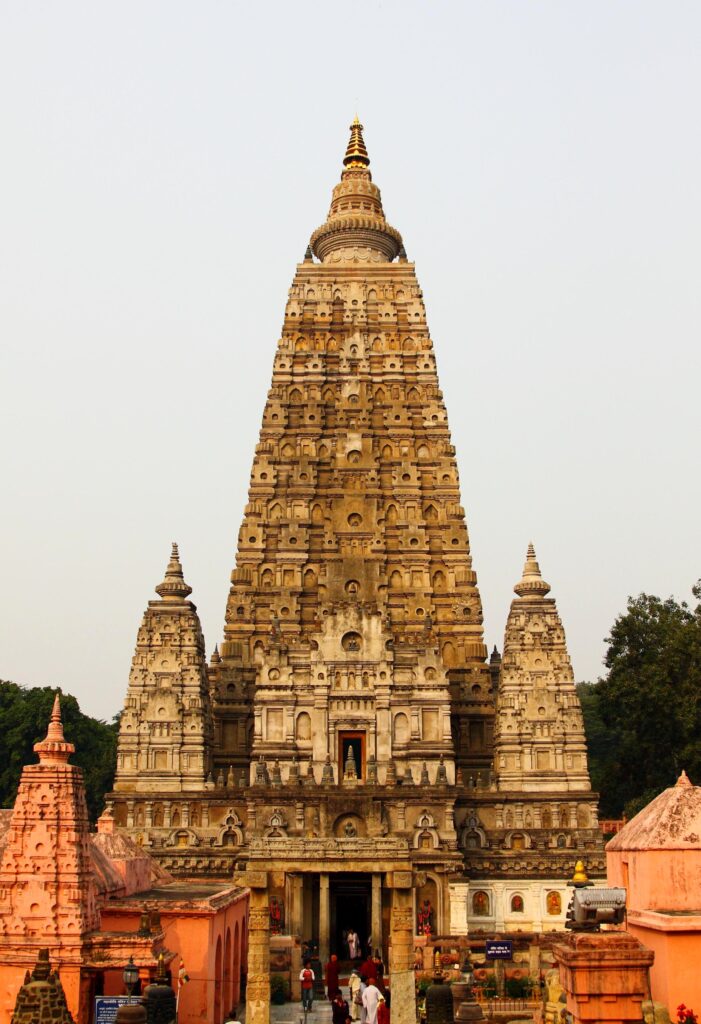
Mahabodhi Temple
Once you have crossed the barrier of security check, you are in the temple premise which is a sprawling complex spread over an area of 5 hectares. And the first attraction that you encounter on entering the complex is the majestic Mahabodhi temple.
The Mahabodhi Temple is an ancient Buddhist temple in Bodh Gaya that marks the spot where the Buddha is supposed to have attained enlightenment.
The temple is located to the east of the Mahabodhi Tree. It has a fantastic architectural effect. It has a 48-square-foot basement and rises in the shape of a cylindrical pyramid until it reaches its cylindrical neck. The temple stands 180 feet tall, and on top of it are Chatras, which represent religious authority.
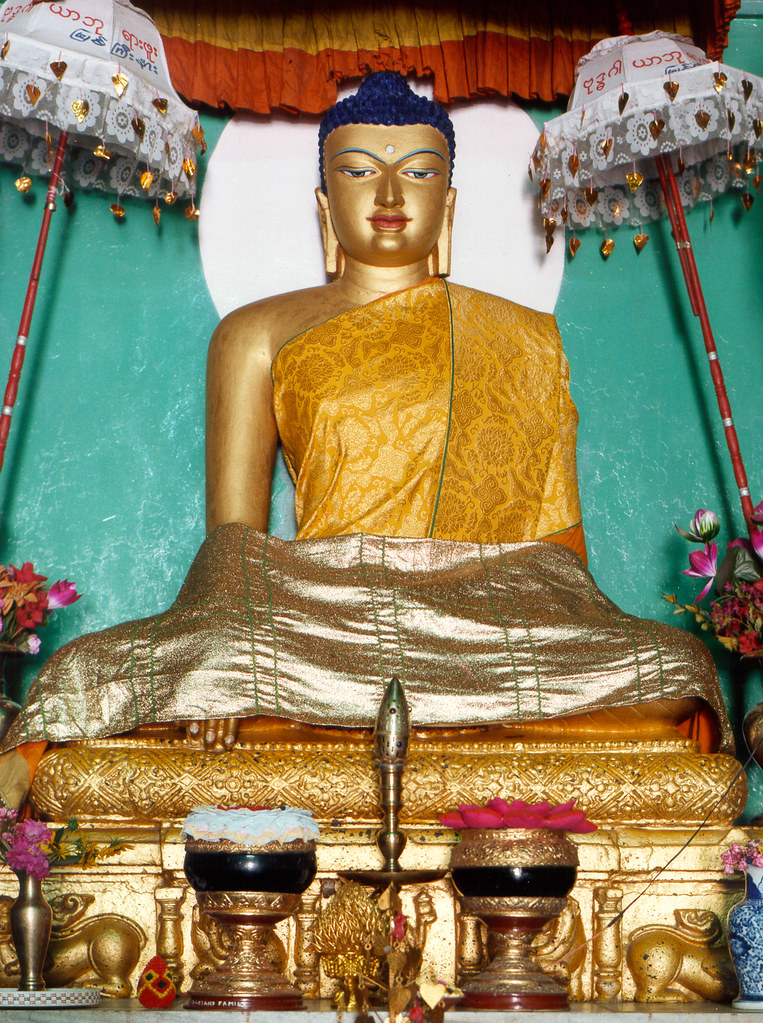
Four towers in the corners rise gently, lending poise and balance to the holy monument. Inside the temple, on an altar in the main sanctum, is a colossal image of Buddha in a sitting posture. Buddha attained enlightenment while in this posture. The temple’s entire courtyard is studded with a large number and variety of stupas. These stupas, which were built around 2500 years ago, are extremely beautiful and elegant.
According to UNESCO, “the present temple is one of the earliest and most imposing structures built entirely in brick from the Gupta period” (300–600 CE). Mahabodhi Temple’s central tower rises 55 metres (180 ft), and was heavily renovated in the 19th century. As you can see, the temple construction doesn’t follow the traditional Buddhist architectural style, rather it strikingly resembles Hindu temple.
The temple was accorded UNESCO world heritage site status in 2002.
Must Read: Dancing Shiva of Chidambaram: Where science meets spirituality
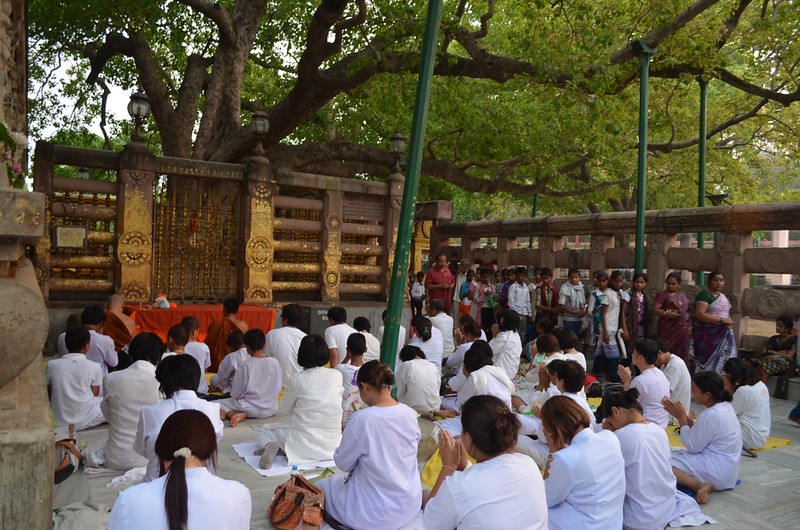
Bodhi tree
To the West of the Mahabodhi Temple lies the Bodhi tree, a central symbol in Buddhism. It marks the spot where the original Bodhi tree once stood, under which Lord Buddha attained enlightenment. For more than a month, Siddhartha (as Buddha was earlier called) meditated beneath a sacred fig tree in Bodh Gaya.
Every year on December 8, Buddhists around the world observe Bodhi Day, a commemoration of Buddha’s enlightenment beneath the Bodhi tree. The current Bodhi tree is most likely the fifth generation of the original tree.
You can see Buddhist monks reclining in tranquilly here, reading or meditating, surrounded by finely carved votive stupas, chaityas (Buddhist prayer halls), and statues of Lord Buddha. History has it that Emperor Ashoka’s daughter, Sanghamitra is supposed to have taken a branch from the original Bodhi tree from Bodh Gaya to Sri Lanka and planted it in the city of Anuradhapura.
That Bodhi tree is still living and is said to be the world’s oldest continually documented tree. The Bodhi tree that you see now in Bodh Gaya is thought to have developed from a sapling brought from Sri Lanka.
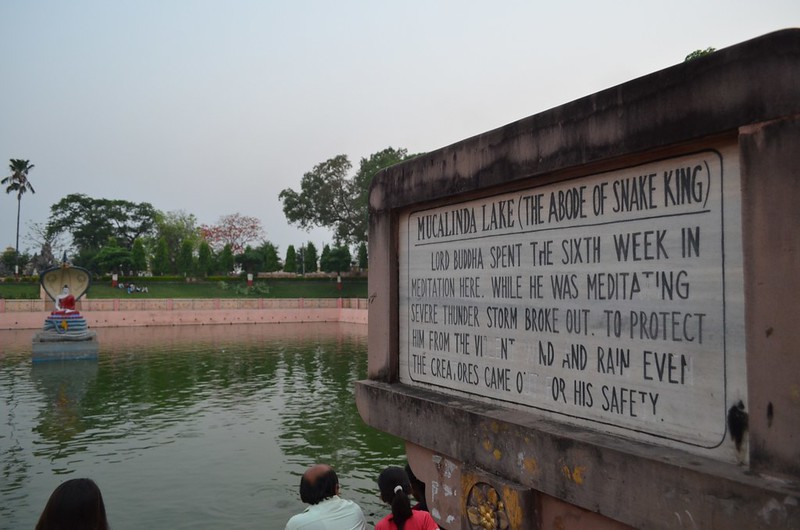
Muchalinda Lake or Lotus Pond
This is a major attraction at the Mahabodhi temple complex though technically Muchalinda lake is not inside the temple premise. To reach here you just have to walk a few meters to the East of the main Mahabodhi shrine. The lake, often known as the “Lotus Pond,” is surrounded by thick flora and has a tranquil environment.
A beautiful statue of Lord Buddha meditating on a snake coil shielded by its hood is a major attraction here, and it is placed in the center.
The pond water is sacred, and it is home to thousands of fish, which you can feed with puffed rice. Actually, there is a legend associated with this lake. During his sixth week of meditation, Lord Buddha was meditating near the lake when a severe storm broke out, causing the waves to lash him.
Sensing the discomfort of Buddha, the Snake King (Muchalinda) decided to protect Buddha from the storm. The entire tale has been inscribed on a stone at the lake boundary. The lake wears an amazing look at night due the decoration and the lighting on the edges of the lake.
You will also like: A Day Trip to Pichavaram Mangrove Forests
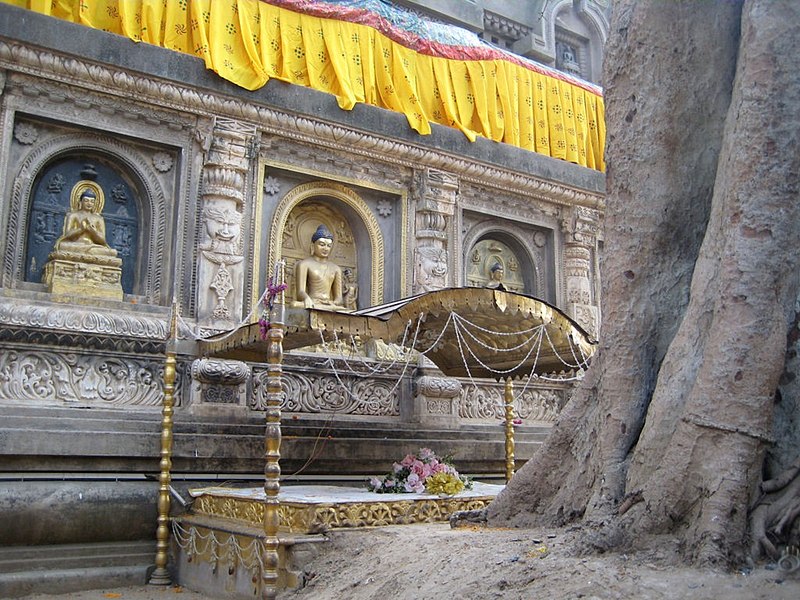
Vajrasana or Diamond Throne
As you walk from the Bodhi tree towards the main Mahabodhi shrine, you come across a red sandstone slab. Emperor Ashoka is claimed to have placed the slab between the Bodhi tree and the Mahabodhi Temple to mark the exact position where Lord Buddha used to sit. It is known as Buddha’s vajrasana (meaning diamond throne of thunder seat). History has it that Lord Buddha sat here in meditation, staring eastwards.
It is one of the most famous of Ashoka’s many pillars (on which he had etched his edicts and understanding of religious teachings), and it stands in the southeast corner of the temple. Vajrasana has been mentioned in the works of many scholars, including Ashvaghosa, who says in his Buddhacharita that this seat is the “navel of the earth.”
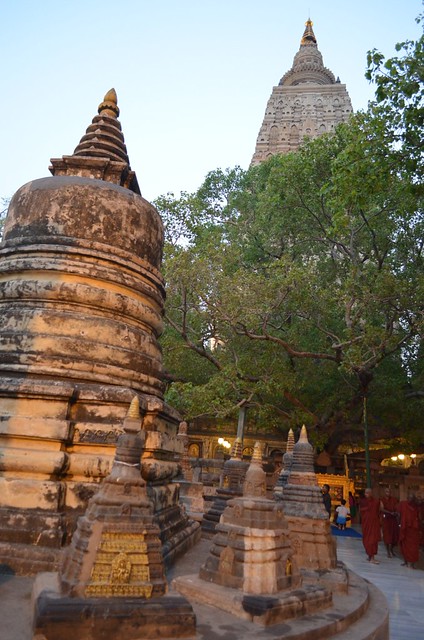
Votive Stupas
In the temple complex you can see a number of structures which are distinctive domelike drums, originating in eight cylindrical structures in which the Buddha’s relics were placed after his death. These are the Votive stupas that have survived in vast numbers. The stupa shape has become associated with the Buddhist goal of release from the cycles of suffering and rebirth.
In addition to the drum, this stupa has a tiered base and is crowned with a series of stylized umbrellas that symbolize royalty and divine status. Although little is known about the uses of votive shrines and stupas, the larger ones at Bodh Gaya were probably given by visiting kings, while smaller stupas were offered by monks and lay pilgrims.
Also Read: Must visit places en route Dwarka-Somnath roadtrip
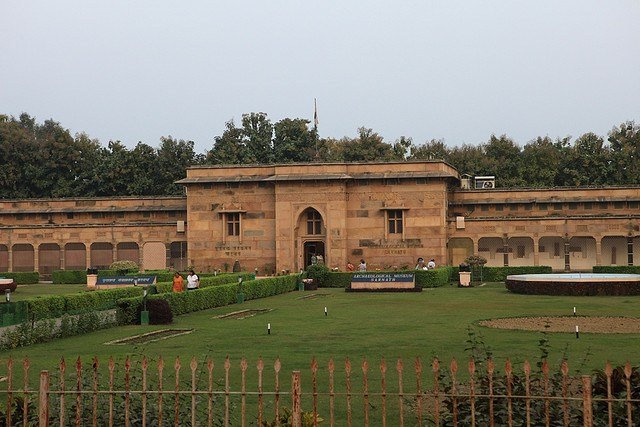
ASI museum near the temple complex
The Bodhgaya Archaeological Museum was established in 1956, adjacent to the famed Mahabodhi Temple. The museum has several great and rare antique collections, including as terracotta artefacts, first-century sculptures, and statues of Hindu gods made of silver, bronze, and gold, among other things.
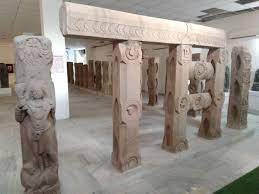
Visitors can experience all of Lord Vishnu’s Dasavatara, or incarnations, in an inside gallery. The museum houses huge statues of Lord Buddha in abhaya mudra and varaha avatars. Objects from the Mauryan and Gupta dynasties, as well as coins from the Mughal era, are also on exhibit. Apart from curious visitors, historians and archaeologists visit the site on a regular basis.
Other attractions in Bodh Gaya
When you are done with visiting the Mahabodhi temple complex, you can now shift your attention to the other attractions that dot Bodh Gaya. While most of these places and monuments are associated with Lord Buddha or Buddhism, there are places revered by the Hindus. Vishnupada temple is a case in point.
While there are numerous places of attractions in and around Bodh Gaya, I shall be talking only about a few without which your Bodh Gaya visit is not complete.
Must Read: Revisiting Bhima Bhoi and Mahima Dharma in Khaliapali
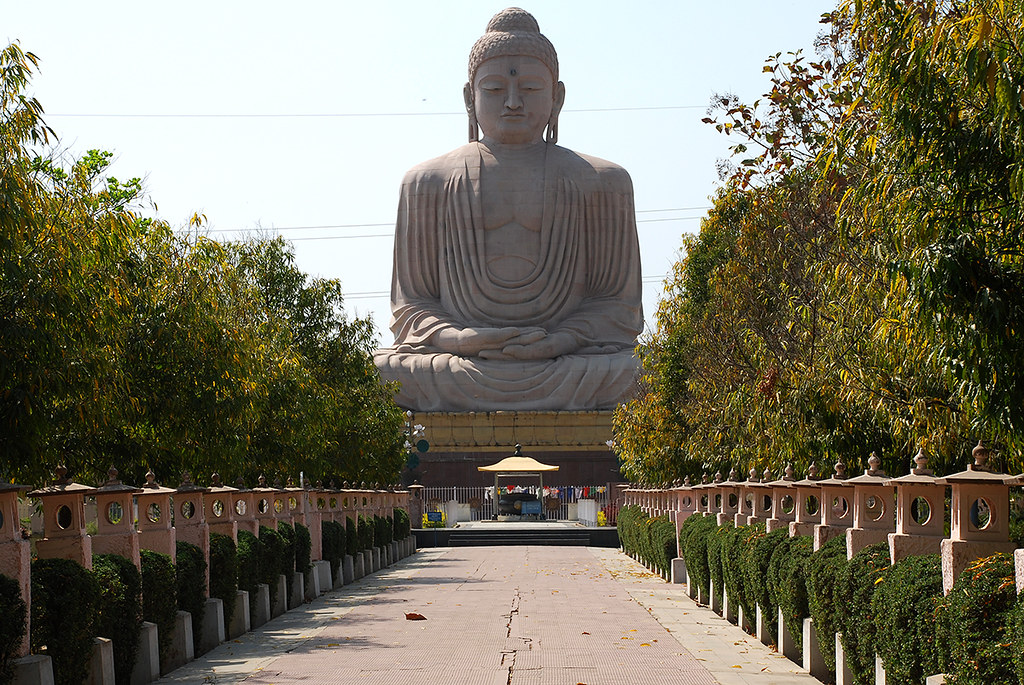
Great Buddha statue
This is one of the popular stops on the Buddhist pilgrimage and tourist routes in Bodh Gaya. The Giant Buddha aka Great Buddha statue, exquisitely carved out of sandstone blocks and red granite, is a major tourist attraction in Bodhgaya. The statue depicts Lord Buddha meditating while seated or Dhyana Mudra in open air.
It measures about 64 feet tall and was built by 12,000 masons. It took seven years to complete the statue. The fourteenth Dalai Lama inaugurated the Great Buddha Statue in 1989. The total height of the monument is 80 feet, of which the Buddha is 64 feet, the lotus on which the Buddha sits 6 feet, and the lower pedestal is 10 feet.
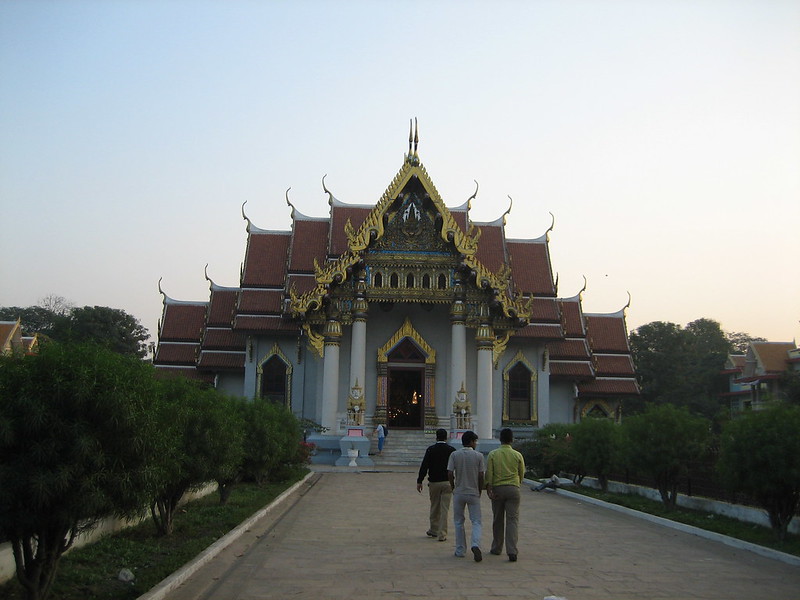
Thai Temple and Monastery
This is a place that you can’t afford to miss in Bodh Gaya. In 1957, some Buddhist monks collaborated with the Thai government to build the Thai Temple and Monastery in Gaya with the aim of spreading Lord Buddha’s messages and Buddhist teachings to the masses. This beautiful site, a wonderful example of Thai architecture, exhibits the many colours of Thai culture and history.
The monks who live here play an important role in propagating Lord Buddha’s ideas and teachings. Inside the temple, there is a huge bronze statue of Buddha surrounded by equally stunning paintings of him. Every year in the month of January, the monastery organises silent retreats.
You may find it interesting: Sabarmati Ashram: Where simplicity is the mantra
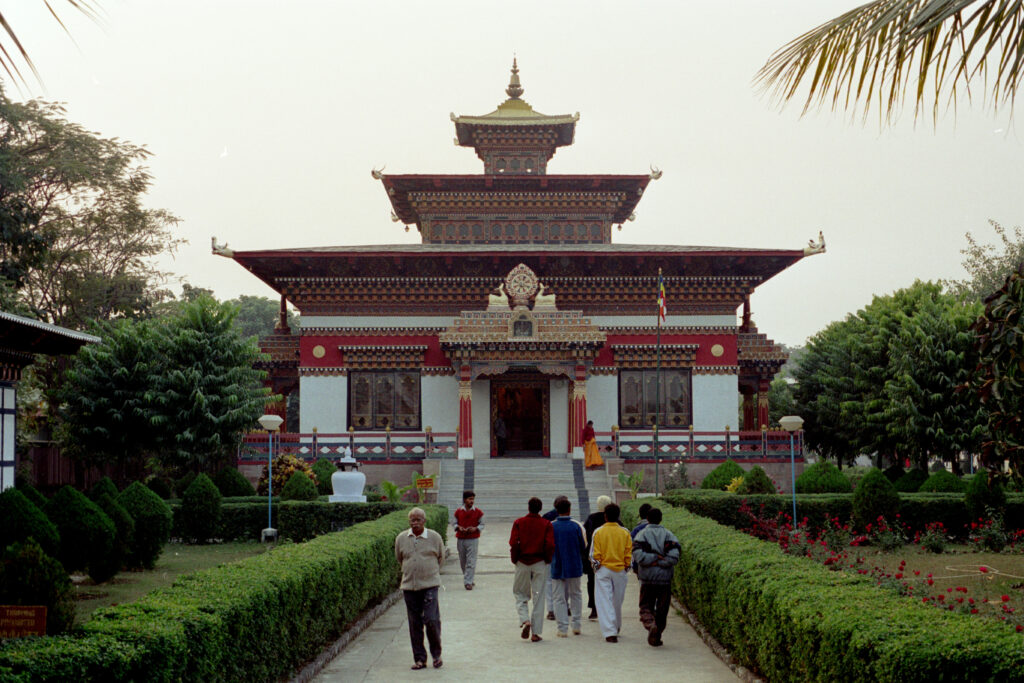
Shakti, Wikimedia Commons
Royal Bhutan Monastery
This majestic Buddhist monastery and temple is just a 500 metres walk from Great Buddha Statue and one kilometre from Bodhgaya Bus Station. It is one of the most serene spots to visit in Bodh Gaya, located next to Thai temple.
The Royal Bhutan Monastery, built by the King of Bhutan as a memorial to Lord Buddha, is one of the most notable Buddhist monasteries in the pilgrimage destination of Bodh Gaya. The monastery, which illustrates important events from Gauthama Buddha’s life in the form of clay carvings, attracts millions of Buddhists from across the globe. It is a tranquil setting perfect to learn and practise Buddhism.
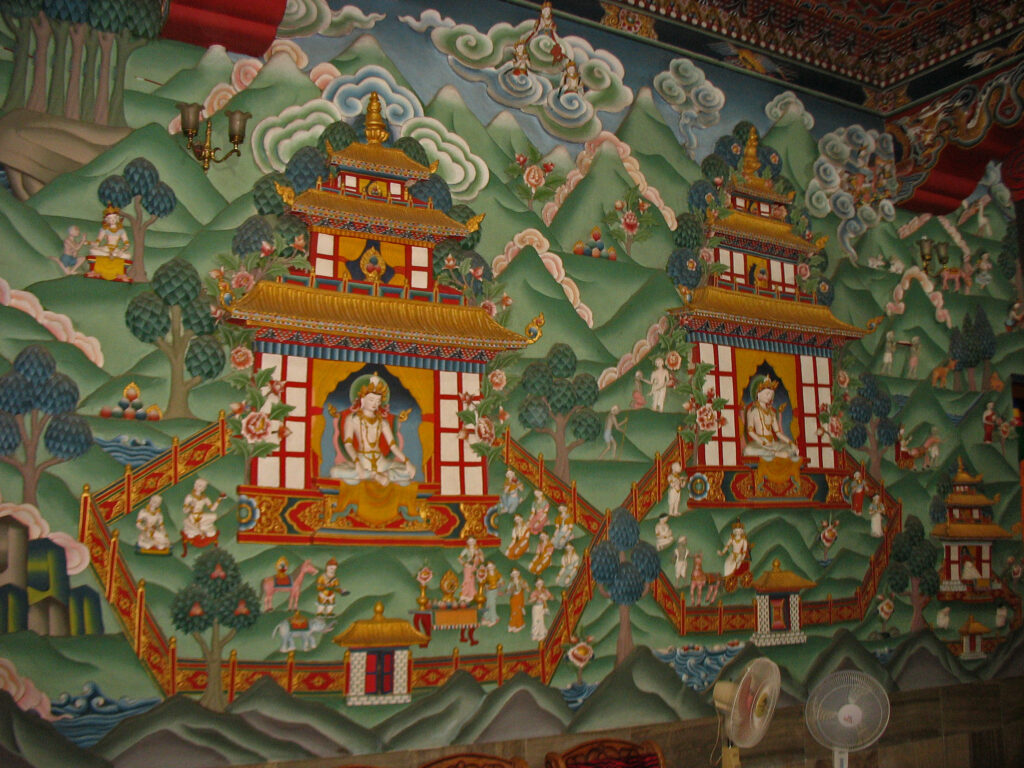
The monastery, built in Bhutanese architecture, houses a beautiful temple as well as a rest house for Bhutanese monks. The monastery’s temple contains a 7-foot-tall figure of the Lord Buddha, which is etched with Buddhist symbols and scriptures. Also, the monastery conducts discourses on Buddha and his teachings, guides individual and group meditation, organises peace prayers, and offers prayers at the temple.
There is also a guesthouse with 15 decent rooms at the monastery. Visitors are not required to pay anything for their stay, however they should consider donating to the monasteries’ upkeep and expenses.
Also read this article: Top places to visit in Dwarka and things to do

Dungeswari Hill Temple or Mahakala Caves
Also known as Mahakala Caves, the Dungeshwari Caves are located 12 km north-east of Bodh Gaya. Lord Buddha is believed to have meditated in this place for six years before he went to Bodh Gaya to achieve enlightenment. A golden emaciated Buddha sculpture commemorating his rigid penance is enshrined in one of the cave temples. Another cave houses a large statue of Lord Buddha, about 6 ft high, to pay tribute to that phase of Buddha’s life.
There is a popular myth associated with these cave temples and it is said that during his self-mortification, Gautama became emaciated. A cow-herder by the name of Sujata was moved by his weak appearance and offered him food and water.
Gautama afterwards realised that self-abasement would not lead to enlightenment and continued his travel to Bodh Gaya. Dungeshwari, the Hindu goddess, is revered at one of the cave temples.
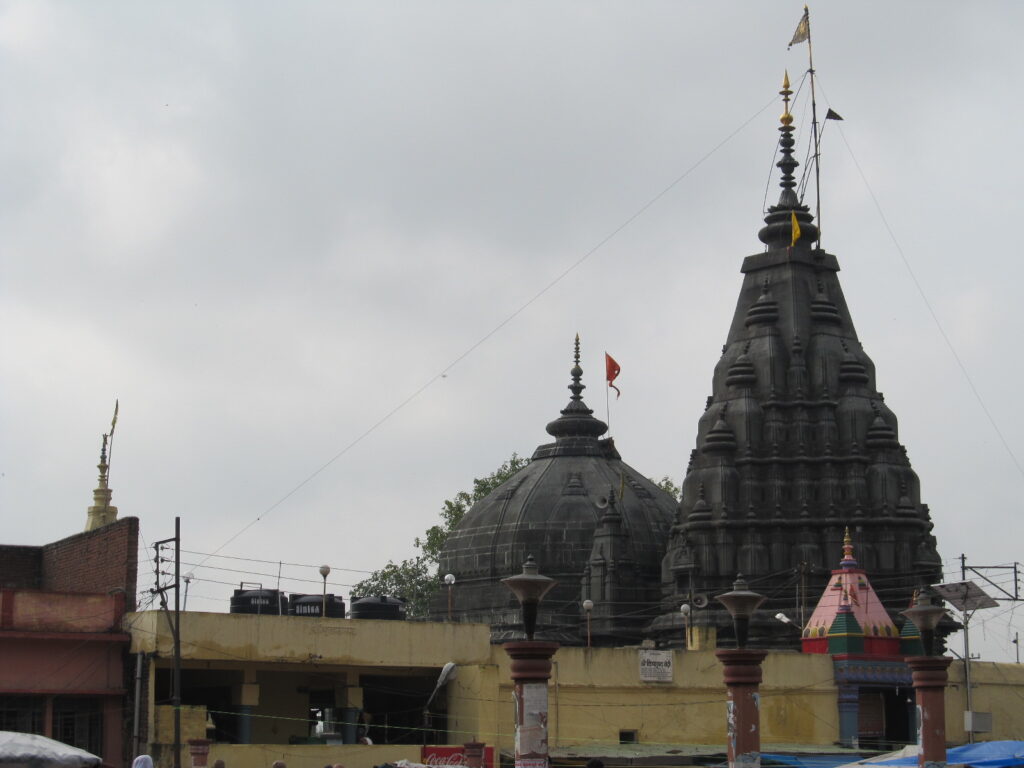
Vishnupada temple, Gaya
Amidst the numerous Buddhist monuments in Bodh Gaya, the Vishnupada temple along the Falgu river in Gaya stands as the only major Hindu shrine that you must pay a visit to. In a way Gaya is the gateway to Bodh Gaya at a distance of about 13 kilometers.
This is a Hindu temple devoted to Lord Vishnu and is characterised by Lord Vishnu’s footprint, known as Dharmasila, etched in basalt.
Legend has it that Lord Rama along with Sita had visited this place to perform the ‘pind daan’ ritual of his father Dasaratha. Though the construction date of the temple is not known, the present-day structure was rebuilt by Devi Ahilya Bai Holkar, the ruler of Indore, in 1787, on the banks of the Falgu river.
A flight of 1000 stone steps leads to the top of the Brahmajuni hill, 1 km southwest of the Vishnupad mandir. Visitors prefer to go to the top of Brahmajuni hill to see the view of the temple from the top. There are many small temples near this temple.
The 40 cm long footprint of Lord Vishnu is etched in solid granite and surrounded by a silver-plated basin inside the Vishnupada temple. The temple stands 30 metres tall and is supported by 8 rows of intricately carved pillars. The temple is made of enormous grey granite slabs that are joined together with iron clamps. The octagonal shrine is oriented east with Its 100-foot-tall pyramidal tower..
Odisha Special: Everything you need to know about Ranipur Jharial temples
Travel Tips
- Gaya airport, 12 kilometers away, has infrequent direct flights from Kolkata and other big cities. If you’re coming from other major Indian cities, the nearest airport is in Patna, 140 kilometers away. From Patna, Bodh Gaya is a three to four-hour drive.
- Bodh Gaya is easily accessible by train. Gaya is the nearest railway station, having good connectivity to Patna, Varanasi, New Delhi, Kolkata, Puri, and other Bihar cities. The train journey from Patna takes roughly two and a half hours.
- Bodh Gaya can also be visited as part of a pilgrimage along with other Buddhist sites in India. Indian Railways operates a special Mahaparinirvan Express Buddhist Tourist Train.
- The pilgrimage season in Bodh Gaya begins in September and peaks in January. Weather-wise, the best time to come here is between November and February. Avoid the monsoon season, which lasts from June through September. Summers are extremely hot from March to May. However, around this period, Bodh Gaya receives a significant number of pilgrims for Buddha Jayanti (Buddha’s birthday) celebrations, which are held in late April or May.
- If you’re on a tight budget, the monastery guesthouses in Bodh Gaya provide a cheaper option to a hotel. The lodgings are simple but tidy. There are also a number of guesthouses and hotels to suit your pocket.
- Electricity supply can be erratic at Bodh Gaya, so it’s a good idea to carry a flashlight with you. It is traditional to take off your shoes before entering the sanctum of the main Mahabodhi Temple complex, as well as any of the monasteries around the area.

